Archive for Landscape Design
The Ultimate Guide To Landscape Maintenance – v1
“A Landscape is a Living Space that Just Happens to be Outdoors” – GREG SOUTHARD
Didn’t quite get the most out of your gardening experience last season? Well, now that a new growing season is quickly approaching, you’re probably anxious to try a host of new ideas that you’ve included in your landscape maintenance plan which involves correcting all the things that went wrong last season.
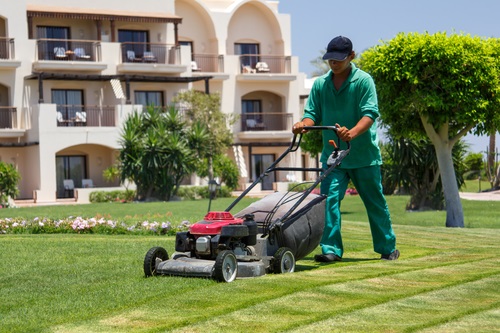
Well, what better way to get started this season, than with landscape maintenance? This not only gives you a chance to make wrong things right in your garden, but you can finally bring new ideas to life.
With that said, if you’re looking to achieve the best results, it’s highly recommended that you hire professional help, however it is still important that you make a checklist of all the areas within your landscape in need of maintenance so that you have a general idea of all the work that needs to be done.
Landscape maintenance can be a tedious task for any gardener or landscaper, however consistency is key. So after you have completed your initial landscape maintenance you might want to keep track of areas in your landscape that need constant attention if they are to stay well-maintained.
In this article, we’d like to discuss what many top landscapers consider to be some of the most important elements of landscape maintenance and how they should be used to keep landscapes fresh, beautiful and healthy.
Landscape Like The Pros! – Follow These Tips And Learn How You Can Maintain The Perfect Landscape!
Have you ever stood and admired a breathtaking landscape that was so beautiful, you wished it were your very own? Well, you can achieve the gorgeous, landscape you’ve always wanted. Apart from patience and dedication, following the fundamental elements of landscape maintenance can make your ultimate landscaping dreams a reality.
It’s really quite simple, landscape maintenance is very important if landscapes are to maintain healthy plants and trees.
There’s no landscaper out there who likes the ghastly sight of weeds or fungi in their garden, as these not only interfere with the look and health of landscapes but they rob the soil of essential nutrients and steal the sunlight that plants and trees need to thrive.
Here is a list of the most important aspects of landscape maintenance landscapers should follow to help them keep their landscapes lush and healthy while exuding beauty and sophistication. These include:
Turf Maintenance – Mowing
To commence with your landscape maintenance, you may want to begin with the largest areas of your landscape first, and mowing your turf is usually the best place to start.
One of the biggest concerns landscapers have with mowing turf is achieving a consistent, turf level throughout the landscape and though landscape maintenance doesn’t come without challenges there’s always a smart way to do things.
To make mowing your turf easy, start by mowing two strips around the perimeter of the turf and then continue by mowing in straight lines perpendicular to this; You can alternate the same pattern at every other mow if possible, until you cover the entire turf area. It may be a grueling task but once you stand back and take a look at the results, we’re sure you’ll be pleased with what you see.
In maintaining your turf this growing season, remember to mow weekly taking care not to remove more than 1/3 of the leaf blade at a time to ensure you maintain a sleek, level turf.
They say a good mower will mow wet turf and pick up clippings better, which once collected could be used later for other purposes like mulching.
Pruning and Trimming
Over the dormant winter period, when there’s not much, if any activity going on with landscapes, things can get a bit out of hand. Trees can accumulate lots of overgrowths, those that do survive the cold, while those that didn’t leave nothing but shells of branches and leaf litter behind.
At this point you know you have to do something to regain normalcy in your landscape, giving your trees, hedges, and bushes a chance to spring new life while helping to make things nice and organized again.
The trick to getting this done is to prune and trim trees and shrubs throughout your landscape; This keeps them looking attractive and producing new growth.
Pruning and Trimming is:
- Best done in the late Dormant Season
- To be done with the correct tools to avoid damaging or killing plants.
- A great way to avoid injuries and maintain safety in and around landscapes.
Even for some experienced landscapers pruning and trimming could be a bit complicated and if not done the right way could potentially kill a plant. This is one of the main reasons why it is recommended that people seek professional help when it comes to landscape maintenance as the professionals will know exactly what to do in these cases. Contact us for more information and look out for volume 2 of this topic.
Revamp Your Outdoor Space With Help From The Expert Rohnert Park Landscapers
“The Garden Is A Love Song, A Duet Between A Human Being And Mother Nature .”
-Jeff Cox

Maybe you’ve just purchased a beautiful home in Rohnert Park but the outdoor space could do with a bit of perspective; Or maybe you already reside in Rohnert Park and feel like your backyard has become nothing more than a wasted space, in desperate need of a makeover.
Well, it doesn’t have to be this way, as an expert Rohnert Park landscaper can be at your door with just a call or click. Look us up at DK Landscaping Inc. as we provide the best landscaping maintenance services that Rohnert Park has to offer; We’d be delighted to come in and give you a hand with any landscaping projects that you may have in mind; We can turn the most unattractive surroundings into an area you can enjoy.
Instantly Transform Your Property – Get Started With Your Own Personal Rohnert Park Landscaper
Planning Your Project
A landscape design is like a floor plan for an outdoor area. Basically, it serves to create a visual representation of a site using scaled dimensions. These plans also include natural elements like flowers, trees, and grass as well as man-made elements such as lawn furniture, fountains, lighting, and sheds. Sounds like a lot huh?
Well, truthfully, this isn’t something you want to skip out on, as this actually saves you time, and money while helping you to determine exactly what your project will need in terms of materials, tools, and costs.
Naturally, most people, will need professional help to plan a landscape the right way; So why not work with the best? The Rohnert Park landscaper experts here at DK Landscaping offer expert advice on landscape design plans or can even help you, by drafting a plan that works for your surroundings and the appeal you wish to exude.
Preparing The Area
Grading the site is usually the first item to be addressed when preparing an area for the restoration or creation of a landscape. Essentially, this is to ensure a level base, that basically acts as a foundation for landscape projects. At this point, our landscaper will also have to perform an evaluation of the drainage, soil conditions and elevations for walls or steps as these are also important elements that need to be considered when creating a landscape.
We make this part easy – Our experienced team of Rohnert Park landscapers here at DK Landscaping Inc. can guarantee A-Class, landscape grading services for the best results with your landscape and also make sure that sites are completely clear of rocks, weeds and debris before proceeding with projects;
As we like to say here at DK Landscaping “ We like weeds, we like jungles”, so there’s no environment we can’t handle. We’ll bring all the necessary tools to get the job done. This brings us to our next step, soil conditioning.
Basically a big word for a product that’s added to the soil to improve its physical qualities. It is made from ‘press mud’, which is a residue of sugarcane filtration and is mainly used to improve poor soils or to rebuild soils which have been damaged by improper soil management. However, in most situations the soil conditioner minimizes the amount of imported topsoil needed for a project, resulting in overall savings for clients.
Once these important aspects are covered then you’re on your way to creating the perfect landscape; And remember, you can get all the expert help you need from our seasoned Rohnert Park landscapers here at DK Landscaping Inc.; We’re just a call away.
Check Out These Popular Landscape Designs For Modern Homes And How Our Rohnert Park Landscapers Can Make It Happen
You don’t want to overdo, but you still want your landscape to be intriguing and have variety; And to be honest, one of the most difficult aspects of landscaping your yard is finding the right ideas. This is simple – you just need the right landscape design to suit your needs. Here is a list of different landscape design ideas for backyards that you may find interesting, to help you to transition your landscape this spring.
A Backyard Design For Entertaining
This particular design is the perfect set-up for summertime activities so if you enjoy relaxing outdoors in the summer this design is ideal for you. Here are the features it includes:
- A large gate to bring in tables, chairs, tents and more
- Hardscaped surfaces to place tables and chairs
- A fire pit and other sources of landscape lighting and heat for fun after dark
- An area to facilitate a grill or an outdoor kitchen to prepare food outdoors
A Low-Maintenance Landscape Design
Mostly used to create enjoyable, serene, outdoor settings without having to perform much maintenance, this design has features that include:
- Xeriscaped and hardscaped areas that don’t require pruning, mowing or watering
- Covered seating area to keep outdoor furniture in good shape.
- Native plants, trees, and grass
A Landscape Design For A Family
With this design every family member can have their own special place to enjoy in the backyard with features like:
- Safe play area for the kids
- Hammock for teens to enjoy a good book on a lovely afternoon
- Seating area for adults to soak up the outdoors and keep an eye on the kids
- Fenced in yard for privacy and safety
With the right tools, our hardworking professionals here at DK Landscaping can make redefining your landscape, a straightforward process that only calls for a basic idea of what you are looking to achieve. Additionally, we can also help you to choose plants, materials and more to ensure your backyard meets your specific needs.
To work with our professionals here at DK Landscaping Inc. please contact us at: (707) 280-3632 or you can visit our website at dklandscaping.com for more information.
Useful Gardening Tips That Promote Healthy Landscapes
As a gardener or landscaper maintaining beautiful surroundings and healthy plants is certainly an important priority and even though this may sometimes be challenging it is necessary if landscapes are to remain healthy and attractive. You want your friends and family to have fun in a garden that is full of life and energy and good maintenance is the key. There are several useful tips that gardeners can apply in effort to promote healthy landscapes and gardens.
Excellent Soil Quality is Vital in Maintaining Healthy Landscapes

Good soil quality is extremely important if plants and trees are to grow healthy and to their full potential. If you discover that your plants, trees or flowers are not thriving this may be due to poor soil quality however one approach that has proven to improve and maintain the quality of soil is the use of fertilizer.
Fertilizer can come in several forms and is an excellent way to enrich soil and promote plant growth. One of the most common forms of fertilizer used throughout gardens and landscapes is organic fertilizer.
Essentially organic fertilizer consist of naturally bio-degradable materials mainly in the form of animal manure but can also be other natural ingredients. It is great for gardens and crops as it not only restores soil quality but improves the long term health of soil promoting healthy landscapes overall..
Mulching Promotes Healthy Landscapes and Gardens
In looking for great ways to promote healthy landscapes and gardens another very useful tip gardeners can utilize is the application of mulch to garden beds and other landscape areas. Generally mulch is used to eliminate weeds, protect and stabilize plants and trees as well as to help soil retain moisture.
Mainly consisting of several, different, materials including chopped leaves, straw, grass clippings, wood chips,sawdust, shredded bark, gravel or stone mulch can be used in vegetable gardens, flower beds, plant pots, around trees, walkway areas, hedges and more.
Among many common gardening techniques the use of mulch has been found to be an easy, environmentally friendly way to promote healthy landscapes and gardens.
Proficient Irrigation Systems Help Promote Healthy Landscapes
In order for gardens or landscapes to remain lush and healthy having an adequate water supply is very important. So a great way to ensure that plants are properly supplied with water is by installing an irrigation system that provides a precise and timely supply of water to landscapes and gardens.
An irrigation system basically obtains water from a source and distributes it equally and uniformly to specific areas throughout gardens. Different kinds of irrigation used include high or micro flow irrigation, in-ground irrigation and automatic irrigation systems.
Over time irrigation methods have improved to better manage different types of gardening done so depending on what type of gardening you do installing the appropriate irrigation system is the best way to ensure gardens and landscapes receive the water they require.
Need Help With Your Landscaping?
Here at Dk Landscaping Inc. we aim to provide the highest quality landscaping and gardening services to clients. Our dedicated team works with clients to manage any type of gardening or landscape services you may need. Whether it be mulching, pruning, irrigation or even planting with affordable rates and great service we’d be happy to come in and assist. Contact us for more information.
Improving the Landscape of Narrow Walkways
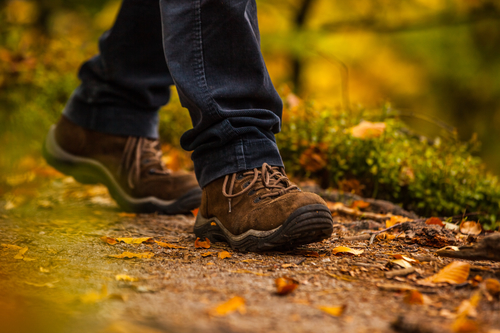 Are you a garden enthusiast who is always looking for ways to enhance your surroundings? Well if you are they’re quite a few simple things you can do to uplift and make a few improvements. Let’s take for instance landscapes that have narrow walkways within their perimeter.
Are you a garden enthusiast who is always looking for ways to enhance your surroundings? Well if you are they’re quite a few simple things you can do to uplift and make a few improvements. Let’s take for instance landscapes that have narrow walkways within their perimeter.
Gardens or outdoor landscapes are set up in such a way that there are certain areas designated for the location of plants, trees and blooms as well as other areas that facilitate the movement of traffic throughout the surroundings known as paths or walkways.
Narrow Walkways can Pose Certain Issues in Landscapes
The main purpose of having walkways throughout gardens is to provide a specified area for persons to travel without causing damage to lawns or blooms. Nevertheless over time some people have used walkways to decorate or add additional character to their outdoor surroundings.
In most landscapes the size of trees or the number of plants increase after a while which can eventually result in smaller more narrow walkways. This can decrease walking space in gardens which can eventually lead to the damage of trees, lawns, plants or flowers.
Over time walkways could incur certain damage causing them get narrow. Some can be a result of the outdoor elements mainly rain or snow or others could be a result of physical or structural damage. Nevertheless regardless of how damaged is sustained its obvious that repair will be necessary to restore walkways to what they should be.
Perhaps a bit of mortar could be used to reconstruct damaged areas or you may have to redesign the entire walkway depending on the extent of the damage but be sure to cover garden beds with tarpaulin to protect the plants you intend to keep.
Increased plant growth is also a very common circumstance that can cause narrow walkways to develop. As we are all aware plants compete for space and grow continually in ideal conditions which can sometimes present certain issues if they’re not properly maintained.
In cases like this plant overgrowth tends to invade areas designated for walking resulting in narrow walkways. Projecting tree branches, overgrown lawns, weeds etc. can all affect the space available to walk so by utilizing pruning and other maintenance techniques gardeners can control plant growth in gardens to maintain adequate space and eliminate narrow walkways.
Plants That Boost Appearance
For people residing in urban areas the best plants to use are low-growing perennials. Besides their beautiful shades most of them die in the winter or can be cut to the ground. Making it easy for gardeners during winter and the upcoming growing season.
The Lysimachia nummularia species possesses a delicate looking foliage that covers ground quickly and softens the edges of a path and using slightly taller plants in landscapes would also prove sensible as they won’t bend into the path creating narrow walkways. In addition to this they will add a contrasting feature to the surroundings.
Need Help With A Narrow Walkway? DK Landscaping Inc. Us Here To Help!
Here at DK Landscaping Inc. we specialize in all your landscaping needs and aim to provide the highest quality services to clients at an affordable price. If you may need assistance repairing, restoring or improving a narrow walkway we’d be happy to come in and give you a hand. Give us a call at 707 217-6508 or contact us via our website.
Effective Garden Tips Part 1 – Use Mulch For A Healthy Garden
In an effort to keep gardens healthy and vibrant gardeners utilize a variety of tips and techniques that serve to nurture, protect and maintain their plants and vegetables. Among these techniques the use of mulch has been found to be one of the easiest and more common methods used to promote a healthy and consistent environment in gardens.
Generally mulching can be utilized in several different areas including vegetable gardens, flower beds, plant pots and walkway areas however it is mainly used to help in the elimination of annoying weeds and helps soil to retain moisture. Additionally it also helps to protect and stabilize plants, trees and crops.
Different Types Of Mulch
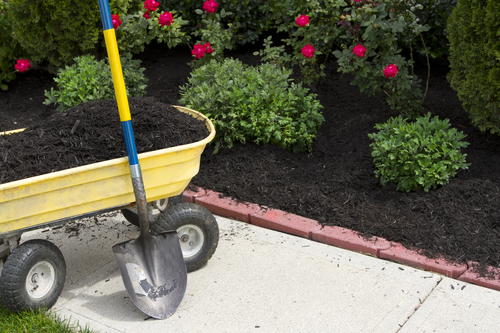
Basically there are two kinds of mulch that can be used in gardens and these are organic or inorganic mulch. Usually organic mulches consist of several different materials including chopped leaves, straw, grass clippings, wood chips, sawdust and shredded bark while inorganic mulches are mainly comprised of gravel, stones, black plastic, and geotextiles.
Nevertheless regardless of the type applied to a garden its use is mainly the same which is to discourage weed growth and improve soil quality however organic mulches gradually improve soil as they decompose while inorganic mulches don’t.
How To Mulch
Gardeners mulch gardens for a variety of reasons but depending on the reason there are certain tips that should be applied if this technique is to be done properly and is to work effectively.
Mulch To Be Rid Of Weeds
For instance if mulch is being used to eliminate weeds there are two important tips gardeners should remember if it is to be executed accurately. The first tip would be to place the it on soil that has already been weeded and the second would be to lay it down on soil thick enough to discourage new weeds from reappearing.
Normally the thickness of mulch should range from around 4 – 6 inches when applied however in areas where weed growth is not as common a layer of mulch measuring 2-3 inches should be enough to do the trick.
Mulching Reduces The Need To Water Gardens
As a great way to keep soil cool and help plants retain moisture in dry conditions gardeners can again apply mulch to their gardens. It also reduces the need to constantly water gardens and what’s more is that in cold conditions mulching also provides considerable protection to prevent the freezing and thawing of the soil as the gradual decomposition of materials only generate minimal heat.
Additional Tips To Consider
When using organic mulch it is important to remember that they carry a low nitrogen content therefore gardeners should first fertilize soil with a high-nitrogen product such as blood meal or fish meal to increase nitrogen levels in the soil before applying mulch.
Gardeners should also remember to keep mulch about an inch away from crowns and stems to prevent them from becoming choked or damaged and should also be careful not to allow wet mulch to rests against the stems of flowers and vegetables as it can cause them to rot.
So protect and maintain the ideal environment in gardens by considering mulching it will save you time and promote a healthy environment for your plants or vegetables.
Need Help In Your Garden?
If you don’t know what to do or need help mulching your garden don’t hesitate to give us a call at DK Landscaping Inc. at: (707) 217-6508 we’d be happy to come and give you a hand. You can also check out our website: dklandscaping.com to have a look at the services we offer.
How Mulch Can Be Applied To Your Garden v2
To keep gardens healthy and vibrant gardeners utilize mulching and it is one of the easiest and more commonly used methods in most gardens. Mulch is mostly available in two forms organic and inorganic and is mainly used to eliminate weed growth, lend additional support to plants and to help plants retain moisture. Mulch can be purchased from any gardening supply store or can even be formulated by gardeners themselves by recycling other products or materials.
Try Mulching!
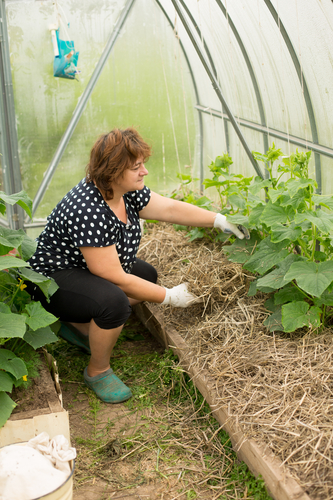
If you mow your lawn the clippings of grass that remain can be converted to mulch. Grass clippings have a high nitrogen content and can be used to naturally fertilize plants but works exceptionally well to fertilize vegetables.
For gardeners who have enough compost this too can be used as mulch. Once it isn’t dried out compost is great for enriching soil but to ensure that it provides the necessary nutrients and remains biologically active another layer of mulch such as chopped leaves should be added to cover the compost.
There are so many different things found in and around gardens that can be used to mulch. Having said using straw or hay throughout gardens is another excellent mulching option. It has most of the benefits of other mulches while adding organic matter to soil as it decomposes.
Gardeners should keep in mind when using hay or straw to make sure it is weed and seed free when making applications. They should also ensure that it is not placed too close to stems to prevent attracting slugs and rodents.
Did you know that mulching a vegetable garden with sheets of black plastic film can do wonders? This is another neat, gardening and mulching alternative that has proven to be very effective where the black plastic transmits the sun’s heat to the soil beneath, creating a microclimate that is about three degrees warmer than a garden that does not have mulch applied.
Since the plastic film remains warm and dry fruits and vegetables are protected, they don’t rot and they are kept clean. As with other mulches it prevents weed growth and retains moisture however when using plastic gardeners should remember to punch holes so that soil can still receive air and that plants and seeds can be transplanted or sown.
As we may know some mulches come in inorganic forms as well. Gravel, stones, and geotextiles can all be used to mulch gardens. Even though some are of a hard or rough texture and do not filter nutrients into soil they still allow air and water through to the soil beneath while keeping weeds from coming up.
These are all great ways to recycle materials or products in and around gardens or homes as well as to help gardeners to save money. Mulching is great for plants and vegetables and promotes a healthy environment throughout gardens so if you haven’t already maybe it’s time you start as you don’t even have to buy it you can make it and apply it yourself. Contact us for more information.
Kinds and Uses of Fertilizer
Are you a gardening enthusiast or local farmer? Well if you are you most likely do all in your power to create and maintain a healthy environment for your blooms or crops. There are some cases though that crops or plants don’t grow to their full potential and one of the main reasons for this is poor soil quality. There are a few techniques that can be applied to rectify the issue of poor soil quality one of which is the use of fertilizer.

Fertilizers In Detail
Fertilizer can come in several forms and is an excellent way to enrich your soil and promote plant growth. Before using fertilizer with your plants or crops it would be a good idea to educate yourself on the different types of fertilizers and why they are used. It would also be best to read labels to ensure that applications are accurately made when using fertilizer. Here is a list of some of the most commonly used fertilizers in gardens or on farms. These include:
- Organic Fertilizer – These consist of naturally bio-degradable materials and mostly come in the form of animal manure but others can also contain compost, seaweed, peat moss, mineral deposits and other ingredients from nature. This type of fertilizer is great for gardens and crops as it not only restores the overall soil quality but improves the long term health of soil.
- Inorganic Fertilizer – Again this type of fertilizer can come in several forms including liquid, powdered or granular form. These fertilizers are generally used to treat industrial fields as they are cheaper and produced on a large scale. They also allow plants to carry nutrients from the soil easily since they are not as bulky as organic fertilizers.
- Chemical Nitrogenous Fertilizer – This type of fertilizer usually comes in granular form and has a high content of nitrogen. Once applied to the soil it is converted to ammonia and dissolves when it rains where the nutrients then travel through the ground and into the plant’s roots.
- Phosphate Fertilizer – This is mainly applied to soils that are acidic and is contained in both organic and synthetic forms. This type is usually applied during the sowing season.
- Potassium fertilizer – This is normally utilized to help improve plants thriving in sandy soil. It works to increase the potassium content where it’s inadequate. Potassium fertilizer can come in the form of sulfate of potash and muriate of potash. Sulfate of potash is made by treating potassium chloride with magnesium sulfate and muriate of potash uses a crystallized form of potash to fertilize plants which is absorbed at the surface level of the ground.
Now that persons are a bit more educated on the different types of fertilizers and their uses they should easily be able to determine how and what type of fertilizer they should use to achieve the best results with their plants or crops. Contact us for more information.
Ideas On How To Save Water For Gardening
Gardening is a recreational activity for many Californians. Creating and maintaining a lovely garden is the dream of every gardener. With seasonal plants, exotic varieties and breathtaking blooms nurturing and maintaining a garden can sometimes be pretty challenging task.
There are several activities and responsibilities that need to be considered and employed in order for a garden to be properly maintained and nurtured. One of these main responsibilities would most definitely include the provision of water to trees, plants and flowers.

Successful Gardening
When it comes to supplying a garden with water most people have the perception that all is well so long as plants and flowers get watered however this may not exactly be true as there are many factors that can affect the way trees, plants and flowers receive water.
Since this is the case trees, plants and flowers can be affected in such a way that they don’t obtain sufficient nourishment to grow or bloom as they should. Even though this may be so giving trees, plants or flowers an excessive supply of water can be harmful to them and costly for you.
So in order to eliminate most of the issues that are encountered in gardens as it relates to watering plants incorrectly here are a few insightful tips that gardeners could utilize to reduce costs and water usage in gardens.
One very resourceful way to reduce the amount of water used in gardens is to attend and maintain soil. Adding mulch and organic matter to soil are both excellent ways to reduce the excessive use of water in gardens. They both help to improve water retention and soil structure so that plants don’t constantly need to be watered.
Disproportionately watering gardens tends to not only be a wasteful practice but also causes gardeners to do more work than is actually necessary. So to rectify this issue simply check to see if plants, trees or flowers do or do not require water.
To do this gardeners should take a spade and push it deep into the soil if it’s damp things are ok but if it’s dry then it’s definitely time to water. It is important to remember if you have clay soil it might feel damp whether it’s irrigated or not and sandy soil can feel dry even if it contains water. So in these cases gardeners should watch plants for when they start to show signs of water stress.
Knowing the best time to water plants is extremely important and by utilizing certain tools and techniques such as automated irrigation, sprinkler systems, watering cans or hoses water can not only be adequately supplied to plants at the required time but their use can minimize the amount of time spent and the amount of water used watering gardens.
In addition another way to supply water to plants and reduce usage would be to collect rain water. Place an empty receptacle at the end of drains to collect rain water whenever there is a shower of rain.
With this method people could reduce the usage of water in their gardens by 50% helping them to save money and at the same time still being able to care for their gardens.
These helpful tips can easily help gardeners to save time and money but most importantly it can help them to save a very, precious resource. Contact us for more information.
Preserve The Ecosystem With Gorgeous Landscape Designs
Over time scientists, environmentalists and activists have all pleaded with persons around the globe to take responsible measures when it comes to the safety and preservation of our environment. You can create landscape designs that enhance your surroundings and that are environmentally friendly as well.
Ecofriendly Landscape Designs
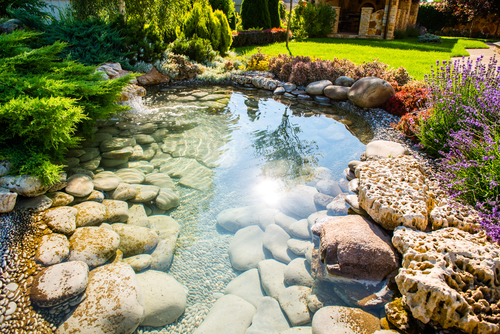
In order to achieve this persons around the world must take action by positively inspiring others to take care of their surroundings along with improving environmental aspects of society, nature and its resources. If these positive actions are consistently promoted and executed even to the tiniest degree they result in a major impact on the environment.
Having a wholesome and positive impact on the environment can be achieved in many ways some of which include recycling and reusing products and properly disposing of garbage and hazardous waste.
Another dynamic and eco-friendly solution would be for persons to preserve ecosystems by using impressive landscape designs. The birds, butterflies, squirrels and many other small creatures all call our gardens or outside surroundings their homes.
These delightful creatures astonish, entertain and offer us a tranquil ambience in and around our homes and surroundings. The individual role of each creature also plays a vital role to the environment and our ecosystem so it is very important that we help to attract and preserve all the elements that influence and affect their habitats.
One suggestion that has proven to be very effective as it relates to preserving the ecosystem would be to grow plants that attract wildlife. By planting the right flowers, trees, shrubs and vines in our gardens and backyards we will be helping to nurture and protect the ecosystems that exists all around our homes and communities.
Using plants and trees that occur naturally in the area you live provides an excellent source of food for birds, insects and other wildlife. Nectar, seeds and tasty fruits are all on the menu however pollen and nectar are among the most common food sources for insects and small birds so by utilizing pollen rich plants like wildflowers and other old fashioned varieties along with annuals and perennials we offer food, nectar and pollen to birds and insects throughout the growing season.
It may not seem like it but by planting a variety of trees and plants we also offer much needed shelter and protection to wildlife to rear their young and hide from predators. Utilizing tips like letting a part of your lawn grown wild to offer sanctuary to ground nesting bees or allowing a dead, hollowed, tree to stand to create nooks for birds and butterflies.
Bird baths, nesting boxes and small ponds all help to promote and increase the wildlife population around us which results in thriving ecosystems. Having readily access to water is very crucial to wildlife survival so again by installing a water gardens or a catch basins for rain can certainly help to provide a constant stream of water for wildlife in our surroundings.
In order to make this a reality as well as to get and stay on a path that encourages the preservation of the environment and it’s many ecosystems the goal would be for each individual to take responsibility and perform positive acts daily that ultimately improve, enhance and protect the environment as a whole. Contact us for more information.
Have A Narrow Walkway? Try These Gardening Tips
There are quite a few gardeners out there who have an extensive knowledge of plants and landscaping in which they use to come up with some very impressive and unique ideas for their gardens. However there are still many amateur gardeners or homeowners out there who love to beautify their properties and are excited about doing new things but lack gardening knowledge.
Try These Gardening Ideas
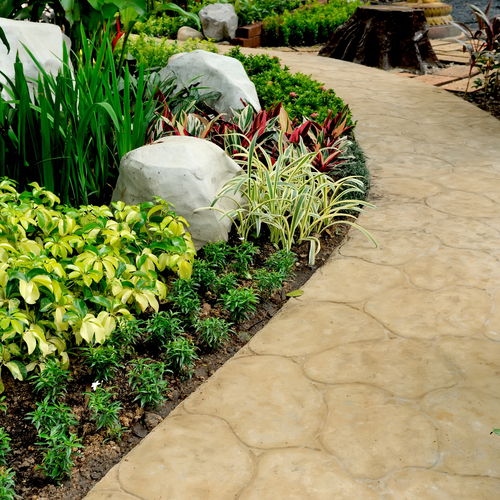
This might be just what you are looking for as this article offers some pretty insightful and dynamic tips that people can utilize to create gorgeous landscape designs while adding ambience and character to their surroundings.
Before focusing on choice of plants a great idea might be to add an outstanding feature to accessorize the garden and surrounding areas of the home. Installing an ornamental gate at the entrance of your walkway is a great start. This will immediately make the walkway feel more private for you and still feel inviting to visitors.
Once this is done establishing a focal point in the garden or surroundings would be the next step. Using an attractive tree, bird bath or bench brimmed with brightly colored plants can serve to draw the eye beyond the walkway while enhancing the appearance of the entire garden.
If the walkway or pavement needs repair it would be best to ensure that this is done in the initial stages. You should not wait until after you’ve planted the flanking beds mainly because this is exactly where you or your contractor will need to tread while working on the path or pavement. So to avoid the destruction of garden beds make sure you do any necessary repairs before proceeding to that stage.
Once you have secured and established the basic groundwork for your garden you want to make sure you choose the correct plants trees and flowers. If you reside in an urban area the best plants to use are low-growing perennials. Besides their beautiful shades most of them die in the winter or can be cut to the ground. This makes it easier for gardeners when dealing with the snow as well and when it’s time to regrow the next growing season.
- The Ajuga, lysimachia, and creeping phlox species all spread like a carpet and Ajuga reptans ‘Catlin’s Giant’ has burgundy-bronze leaves that supply color to surroundings long after its deep-blue flower spikes fade in late spring.
- The Lysimachia nummularia species possesses a delicate, looking foliage that covers ground quickly and softens the edges of a path.
To add more color and variety consider using the Phlox stolonifera species which is popular for the graceful flower clusters it sends up on 8-inch stems in late spring. The wild form is usually bluish but there are also blue, white, and pink varieties.
To give an added touch to your paths or walkways using slightly taller plants would be best. They won’t bend into the way of people using the walkway and at the same time they add a contrasting feature to the surroundings. Be sure though to avoid using plants more than 8 inches tall to prevent overgrowth in the walkway along with overshadowing other features within the garden.
Ensuring that a safe and nurturing environment is maintained throughout, gardens and surroundings should be the priority of every gardener. If in difficulty or you may be lost in some areas hiring a professional would be the best course of action, but if you are just looking for tips to improve and enhance there are a network of informative and effective tips available online that give tremendous insight into how those ideas can be achieved. Contact us for more information.





